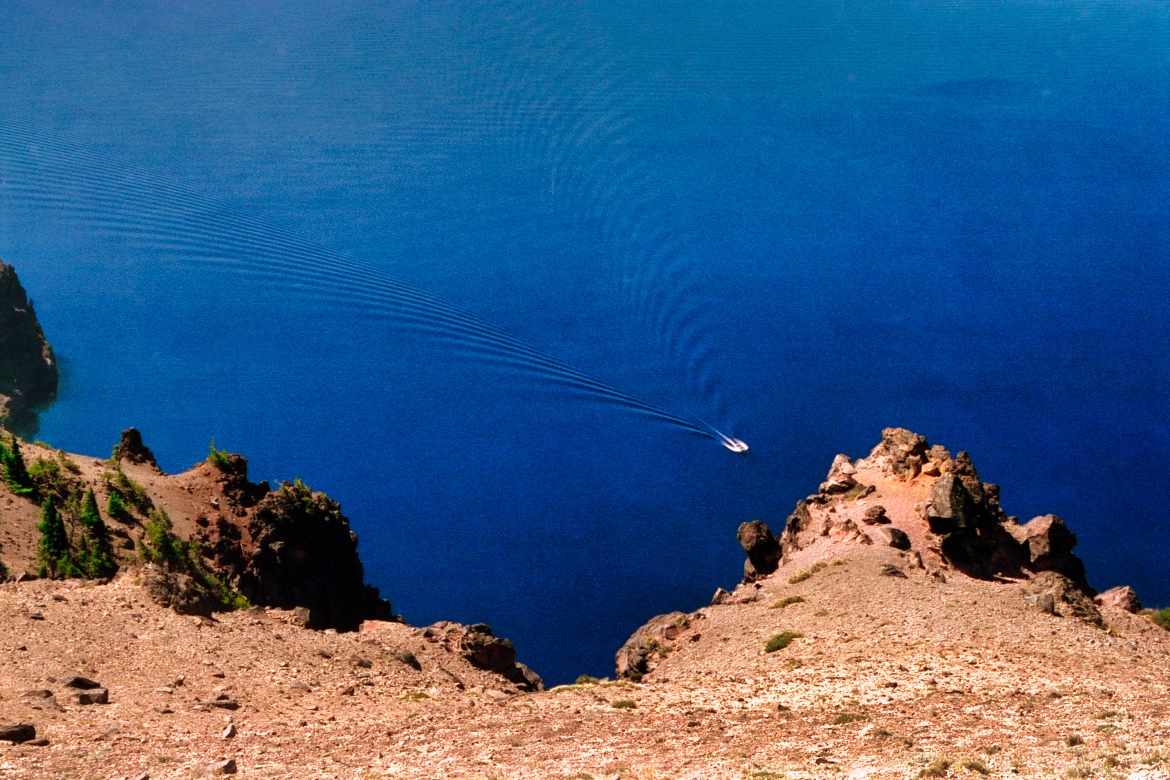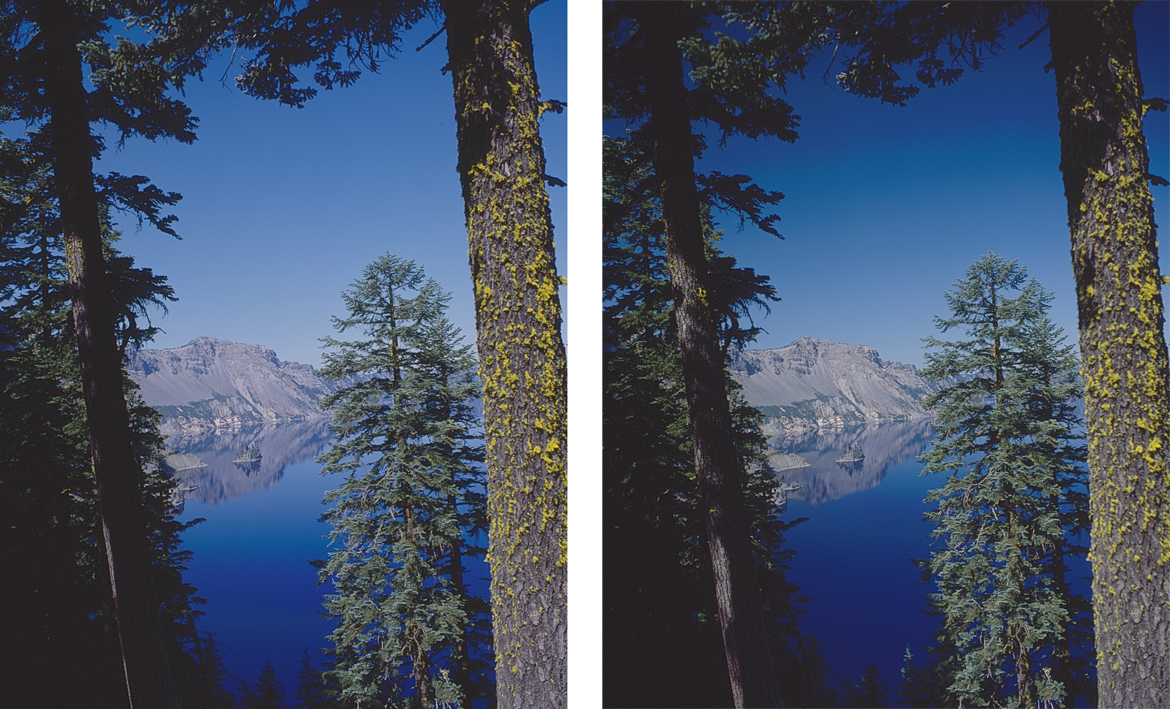Sentinal Point is one of the high spots on the crater rim, providing a commanding vista of nearly the entire caldera of the ancient volcano. I selected this location, a turnout that would mostly avoid oncoming traffic, to setup my equipment that night. I brought out the works, everything I had, telescope, sky tracking camera, and fixed tripods. I planned to take some prime focus deep sky pictures that evening, as well as some wide-angle views of the Milky Way. This meant polar aligning two mounts, which kept me busy until astronomical twilight, some two hours after sunset.
I also placed two fixed tripod cameras for startrail pictures. I spent quite a bit of time trying to find that photogenic angle that included sky, crater, lake, and the star groupings that I wanted to capture; there was just no vantage point that had a clear view. The withered pine trees that grew on the rim surface were just dense enough and sprawling enough, that they always intruded in my viewfinder. If I could just get down to that exposed rocky point on the rim wall, I could get my clear shot. Of course, scrambling down the rim wall is highly discouraged. The barrier at the edge of the turnout is the limit of sanctioned range for tourists, and exploring beyond is prohibited.
Yet down there was the perch that I sought. While it was still light out, I ventured out onto the hybrid surface of rocky talus and weathered soil. A few plants held it together, and some tenacious trees had made outposts. I found a suitable location that contained my target view and planted the tripod. I setup the camera in preparation for later when it would be dark, and I could start the exposure.
Yes, later, when it would be dark. I wondered how I was going to find my camera later when it was dark. It was one degree of risk to climb out of bounds in daylight, another to do it in the dark.
Continue reading

